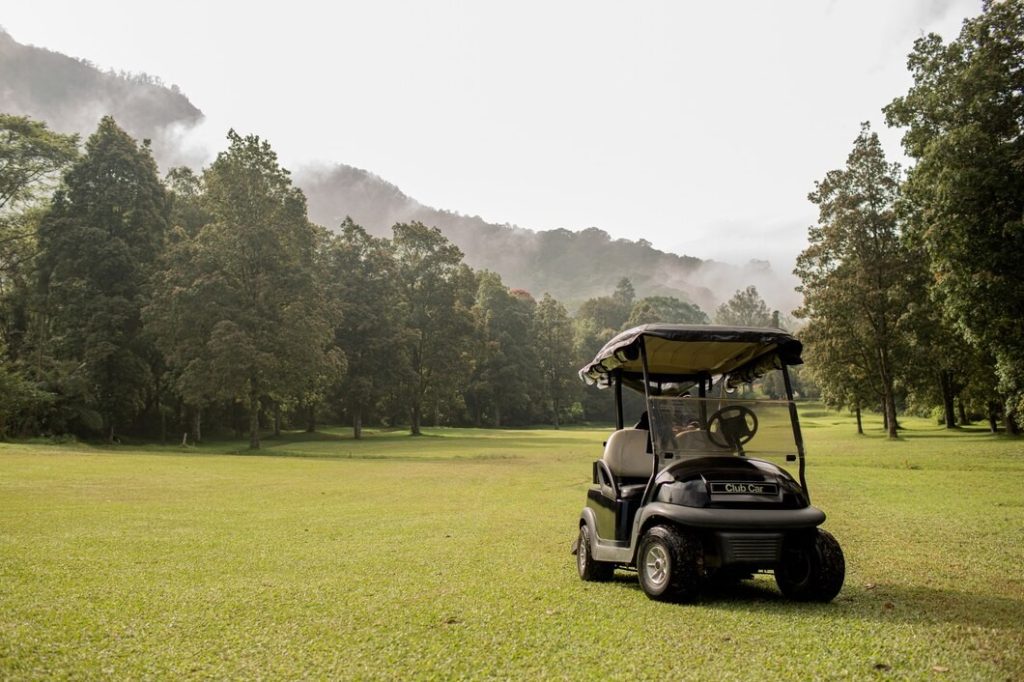Owning a golf cart in Hawaii is not just a convenience; it’s part of the island lifestyle. But the tropical climate poses unique challenges to golf cart batteries, making golf cart battery maintenance in Hawaii essential for long-term performance. Proper care can extend battery life, prevent costly replacements, and ensure your cart is always ready to go.
Introduction – Why Battery Care Matters in Hawaii
Hawaii’s islands offer lush landscapes and perfect golf courses, but the climate can be tough on your golf cart’s battery. High humidity, salty sea air, and intense sunlight accelerate battery wear. Without proper maintenance, even high-quality batteries can fail prematurely. By following expert maintenance practices, you can save money and enjoy reliable performance year-round.
Common Challenges for Golf Cart Batteries in Hawaii
High Humidity and Corrosion Risks
Hawaii’s humid environment increases the risk of corrosion on battery terminals and connectors. Corrosion reduces electrical conductivity, leading to slower charging and reduced range. Regular inspection and cleaning are vital to prevent permanent damage.
Heat and Battery Degradation
High temperatures common in Hawaii accelerate chemical reactions inside batteries, causing them to degrade faster. Overheating can shorten battery lifespan and, in severe cases, lead to leaks or swelling. Proper storage and smart charging practices help mitigate heat damage.
Island Terrain and Frequent Use
Hilly terrain, frequent stops, and longer daily trips can strain batteries more than flat, occasional use. Batteries that are consistently overworked without proper maintenance are more likely to fail.
Essential Battery Maintenance Tips
Cleaning Terminals and Preventing Corrosion
Inspect battery terminals weekly and clean them with a baking soda and water solution to neutralize corrosion. Apply a thin layer of petroleum jelly or a protective terminal spray to prevent future buildup. This ensures optimal conductivity and prolongs battery life.
Checking Water Levels in Lead-Acid Batteries
For lead-acid batteries, maintaining the correct water level is critical. Open the caps and ensure each cell’s water covers the plates. Use distilled water to refill, avoiding tap water that may introduce minerals that degrade the battery.
Proper Charging Practices to Extend Life
Avoid fully discharging your battery before charging. Frequent partial charges are better than deep cycles for long-term performance. Ensure chargers match the battery type and follow manufacturer guidelines to prevent overcharging or undercharging.
Charging Golf Carts in Hawaii – Best Practices
Smart Charging Tips for Daily Use
Charge your golf cart in a shaded, cool area whenever possible. Avoid leaving it plugged in after reaching full charge. Daily use combined with smart charging habits can significantly extend battery life.
Avoiding Overcharging and Undercharging
Both overcharging and undercharging damage battery cells. Use automatic chargers with sensors that stop charging once full capacity is reached. For lead-acid batteries, ensure electrolyte levels are adequate before charging.
Recommendations for Charging Stations at Home and Resorts
Install a dedicated charging station at home or your resort with ventilation to dissipate heat. Consider timers or smart chargers that reduce human error and ensure batteries are charged safely and efficiently.
Lithium vs Lead-Acid Batteries in Hawaii’s Climate
Pros & Cons of Lithium Batteries in Tropical Weather
Lithium golf cart batteries are lightweight, require minimal maintenance, and handle heat better than traditional lead-acid batteries. They maintain longer charge cycles but come with a higher upfront cost. They are ideal for owners seeking convenience and longevity.
Pros & Cons of Lead-Acid Batteries
Lead-acid batteries are more affordable initially but require regular water checks and terminal cleaning. They are heavier and more susceptible to heat and corrosion, which can be challenging in Hawaii’s climate.
Which Battery Type Works Best for Hawaiian Golf Cart Owners
For daily use in Hawaii, lithium batteries are increasingly popular due to their resilience to heat and low maintenance needs. However, lead-acid batteries remain a reliable choice for budget-conscious owners who commit to diligent upkeep.
How to Extend Golf Cart Battery Life in Hawaii
Driving Habits That Affect Battery Life
Smooth acceleration and avoiding sudden starts and stops reduce battery strain. Frequent deep discharges should be minimized, and using the appropriate speed settings for your terrain helps maintain battery efficiency.
Seasonal Storage Tips for Part-Time Residents
If you leave the islands seasonally, store your golf cart batteries in a cool, dry location. Fully charge batteries before storage, and consider a maintenance charger to prevent self-discharge. Remove terminals to prevent corrosion if the cart will sit for months.
Routine Maintenance Checklist
- Inspect and clean terminals weekly
- Check water levels for lead-acid batteries
- Use a compatible charger with proper settings
- Store in shaded, ventilated areas
- Monitor battery performance and range regularly
Signs Your Golf Cart Battery Needs Replacement
Reduced Range and Charging Issues
If your cart cannot travel as far as it once did on a full charge, or if charging takes longer than usual, the battery may be losing capacity.
Visual Wear (Corrosion, Leaks, Swelling)
Corrosion, electrolyte leaks, and swollen cases indicate serious battery wear. Immediate replacement prevents damage to the cart’s electrical system.
When to Upgrade to Lithium
If lead-acid batteries are frequently failing or require extensive maintenance, upgrading to lithium batteries may be cost-effective in the long run. They are better suited to Hawaii’s climate and demanding usage patterns.
Why Choose 808 Golf Carts for Battery Service & Replacement
808 Golf Carts offers expert battery service tailored to Hawaii’s tropical environment. Our technicians provide:
- Professional inspection, cleaning, and maintenance
- A wide range of battery options, including lithium and lead-acid
- Financing and warranty support for peace of mind
Whether you need a battery replacement or a maintenance check, 808 Golf Carts ensures your vehicle remains reliable and efficient. Check our battery services for more details.
Conclusion – Keep Your Golf Cart Running Strong in Hawaii
Regular golf cart battery maintenance in Hawaii is essential to maximize performance and longevity. From cleaning terminals and checking water levels to choosing the right battery type and practicing smart charging, small steps make a big difference. With the right care, your golf cart can handle Hawaii’s unique climate and terrain while delivering years of reliable service. Partner with 808 Golf Carts for expert advice, quality batteries, and professional maintenance that keeps your ride smooth and worry-free.
FAQs
How often should I check my golf cart battery in Hawaii?
Inspect terminals weekly and check water levels in lead-acid batteries monthly to prevent corrosion and ensure optimal performance.
Can I use my golf cart every day without shortening battery life?
Yes, with proper maintenance, smart charging, and avoiding deep discharges, daily use in Hawaii’s climate won’t significantly reduce battery life.
What’s better for Hawaii: lithium or lead-acid golf cart batteries?
Lithium batteries handle heat and humidity better and require less maintenance, while lead-acid batteries are more affordable but need regular care.
How can I prevent corrosion on my golf cart battery?
Clean terminals with a baking soda solution, dry thoroughly, and apply a protective layer of petroleum jelly or terminal spray.
When should I replace my golf cart battery?
Replace the battery if it shows reduced range, slow charging, corrosion, leaks, swelling, or if lead-acid batteries frequently fail-upgrading to lithium is often recommended.




